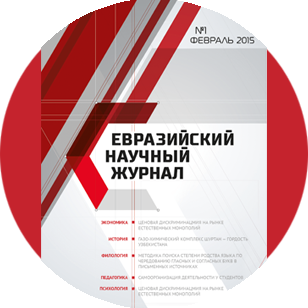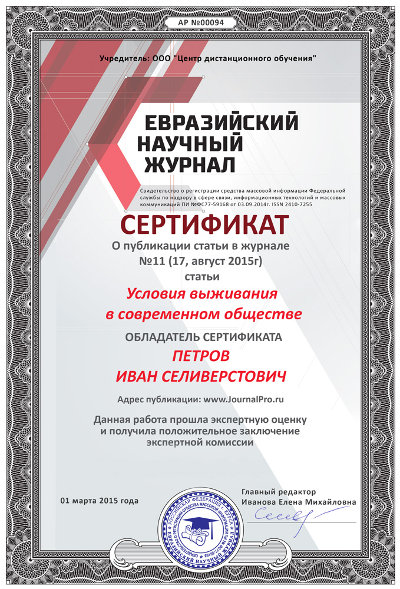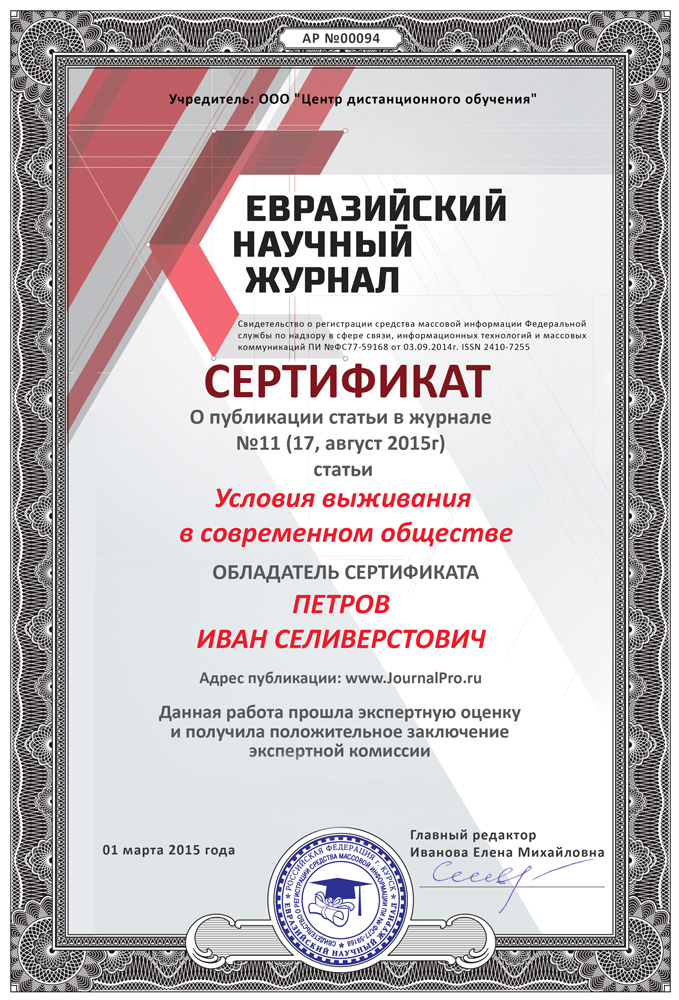Срочная публикация научной статьи
+7 995 770 98 40
+7 995 202 54 42
info@journalpro.ru
COMPARATIVE ANALYSIS OF ENGLISH AND UZBEK PHRASEOLOGICAL UNITS DENOTING COLOURS
Рубрика: Филологические науки
Журнал: «Евразийский Научный Журнал №6 2021» (июнь, 2021)
Количество просмотров статьи: 3089
Показать PDF версию COMPARATIVE ANALYSIS OF ENGLISH AND UZBEK PHRASEOLOGICAL UNITS DENOTING COLOURS
Khoshimova Munisa
Master’s degree student
of Samarkand State Institute of Foreign Languages, Uzbekistan
Kadirova Sitora
Master’s degree student
of Samarkand State Institute of Foreign Languages, Uzbekistan
Abstract: The aim of the given article is to determine similarities and differences between English and Uzbek phrasal verbs, the nature of their correlation and translation on the basis of the theme “Colour”. The names of the colours in different languages are perceived not only literally, they have a symbolic character. Peculiarities of colour vision of the world by representatives of different ethno-cultural communities allow us to talk about the existence of ethnic national colour view of the world. Such differences of different peoples in cultural ideas about the colour are most evident in associations, which point to the national and cultural specificity of thinking. This work gives the analysis of the frequency of their use in phraseological units of the English and Uzbek languages and the research reveals differences and similarities of semantic connotations of colour components.
Key words: set phrases, polysemy, semantic row, similarity, difference, mentality, interaction.
Introduction. It is difficult to imagine any area or sphere of activity of people where colour and colour designation would nor play a significant role. The view of the world of different cultures is universal, but also nationally specific; therefore, speakers of different languages can see the world around them a little differently through the prism of their languages. The language reflects the experience of dozens of generations over many millennia. Historically the prototypes of colours have developed in such a way that they have attached their own shades to the meaning of colour designation, which undoubtedly influenced the development of composing the group colour designation in various languages.
In this article, studies of various colours are considered in two ways. On the one hand, individual concepts specific to a given language are analyzed. First of all, these are stereotypes of linguistic and cultural consciousness. On the other hand, specific connotations of non-specific concepts are highlighted, for example, the symbolism of colour meanings. One can give such an example of the difference in cultural associations of a particular colour. For instance, white in the USA means purity, in France — neutrality, in Egypt — joy, in Japan — death, in India and China — death and purity, and red in the United States means danger, in France — aristocracy, in Egypt — death, in India — life and creativity, in Japan — anger and danger, in China — happiness.
White / Oq
White is the colour of goodness, truth, loyalty, justice and chastity. It symbolizes spotlessness, virtue, purity and joy. White also means something harmless, beneficial, lucky in both languages. For example, oq ko’ngil — a benevolent, sympathetic person; oq yurak — an open-minded person, oq dasturxon — a hospitably laid table, oqsaqol — the eldest, respected person. Here are some examples of English expressions: white reputation — an impeccable reputation, as white as a ghost / as white as a sheet — pale as a canvas, to raise a white flag — to give up, to whitewash something — to cover, to hide something, to know black from white — to understand what is what, to know which side one’s bread is buttered, white lie — an harmless or trivial lie, a noble lie.
Black / Qora
Black, respectively, symbolizes the ills of life, evil and misfortune, it is the colour of evil, fear, death. In a word, the connotations of black are mostly negative both in English and Uzbek. Black has the connotation of something illegal, unlawful, dishonest or secret. The following expressions can be given as examples: qora yurak — a cruel person, qora bet — a disgraced person, qora niyat — full of deceit, ichi qora — he/she is guilty, qorasuyak — a low position in a society, someone in an awkward position, things look black — to be in trouble, black and blue — to have bruise, black eye — bruised under the eye, blackout — turning off the light, black sheep — a family disgrace, to blackmail — to make somebody squeal, to blacklist — to put someone in a blacklist, to black out — to lose consciousness, black market — an illegal trade, black art — a black magic, black spot — a dangerous place on the road, black dog — a depressed, gloomy man, black look — a gloomy, menacing look, to blackball (someone) — to reject someone.
Red / Qizil
Red colour plays an important role in human life. It is no coincidence that the words with the adjective “red” are very often used in the speech of all peoples after white and black colours. In Eastern countries, it is traditionally the colour of the sun, power, as well as a symbol of youth and beauty. In particular, in the Uzbek language there are such phrases like: qizil til — a sharp tongue, wit, qizil qorin — small young children. We can find rare examples of negative connotation in Uzbek: qizil ko’z — a harmful person.
Blue / Ko’k
In English, the meaning of blue is dual. On the one hand, the blue colour is a symbol of truth and justice, therefore its connotation is often positive. Usually it is perceived as a colour inalterability and constancy, for example, true blue — truthful, absolutely loyal, blue ribbon — the best, exceptional or blue blooded — of high noble blood. On the other hand, blue can also mean something gloomy, hopeless, depressing, as in the phrasal units feeling blue as an expression of sadness. Other examples: to get the blues — to be upset, to be in a blue funk — to yearn, to make / turn the air blue — to curse, to use foul language, to drink till all’s blue — to drink up to delirium tremens, to blue money — to squander money, to talk a blue streak — to chatter, to talk a mile a minute, blue in the face — to be furious, to lose one’s head. Other phrasal units with a specific translation are also interesting: out of the blue — unexpectedly, without warning, once in a blue moon — almost never, when pigs fly, men / boys in blue — policemen or sailors in blue uniforms, blue-eyed boy — a favourite, blue collars — industrial workers, a working class; bluestocking — a learned and pedantic woman as a symbol of facelessness, lack of femininity and charm (comes from the name of the 18th century literary circle “Blue stocking Club”).
To sum up, it should be said that when teaching a foreign language, it is extremely important to take into account the specifics of the translation of phraseological units associated with colours because incorrectly understood meanings of these words can significantly change the perception of students. It’s important to remember that a learner of a foreign language automatically attributes to the words of a foreign language the connotations of the native language that are often very different from the original version.
REFERENCES:
1. http://nikitindima.name/2010/07/23/idiomy-anglijskogo-yazyka-cvet/
3. https://englex.ru/english-colour-idioms/
4. The Oxford Russian Dictionary. Oxford, University Press. 1997









